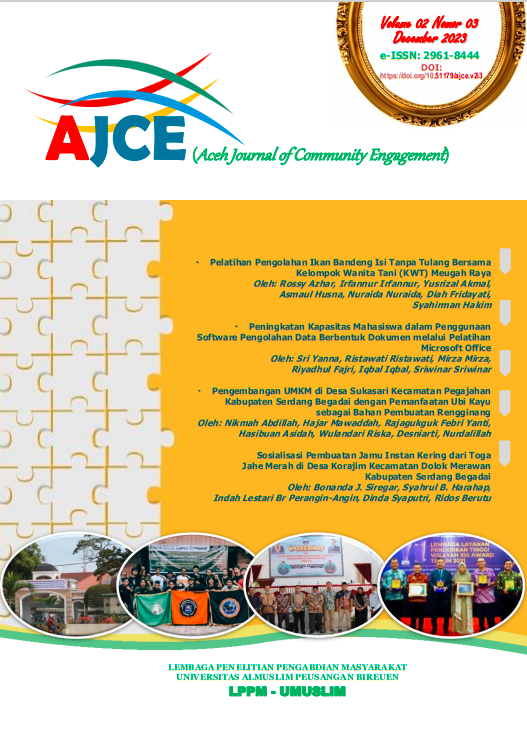Sosialisasi Pembuatan Jamu Instan Kering dari Toga Jahe Merah di Desa Korajim Kecamatan Dolok Merawan Kabupaten Serdang Begadai
DOI:
https://doi.org/10.51179/ajce.v2i3.2430Kata Kunci:
socialization, family medicinal plants (toga), red gingerAbstrak
Family medicinal plants (Toga) can be used for several traditional medicines that are efficacious and cheap. This plant is quite available and can be cultivated by residents in rural areas using garden land or home gardens. Like the red ginger plant (Zingiber Officinale). So, apart from being used by residents as medicine, it can be marketed to increase family income. So in community service activities, a group of UMN Alwashliyah Medan students conducted socialization on how to make herbal medicine from red Toga Ginger to the community, especially PKK mothers and Housewives (IRT). By making use of the Toga in the village, mothers can fill their time with useful activities, and even have the opportunity to increase their family income, which until now has only relied on the results of farming with their husbands and raising livestock. The outreach, according to its objectives, was carried out and succeeded in providing knowledge to residents, both about the properties of ginger, how to make instant dry ginger, and giving participants the skills to produce red ginger herbal medicine as medicine and the opportunity to earn income.
Unduhan
Unduhan
Diterbitkan
Cara Mengutip
Terbitan
Bagian
Lisensi
Hak Cipta (c) 2023 Aceh Journal of Community Engagement (AJCE)

Artikel ini berlisensiCreative Commons Attribution-ShareAlike 4.0 International License.












